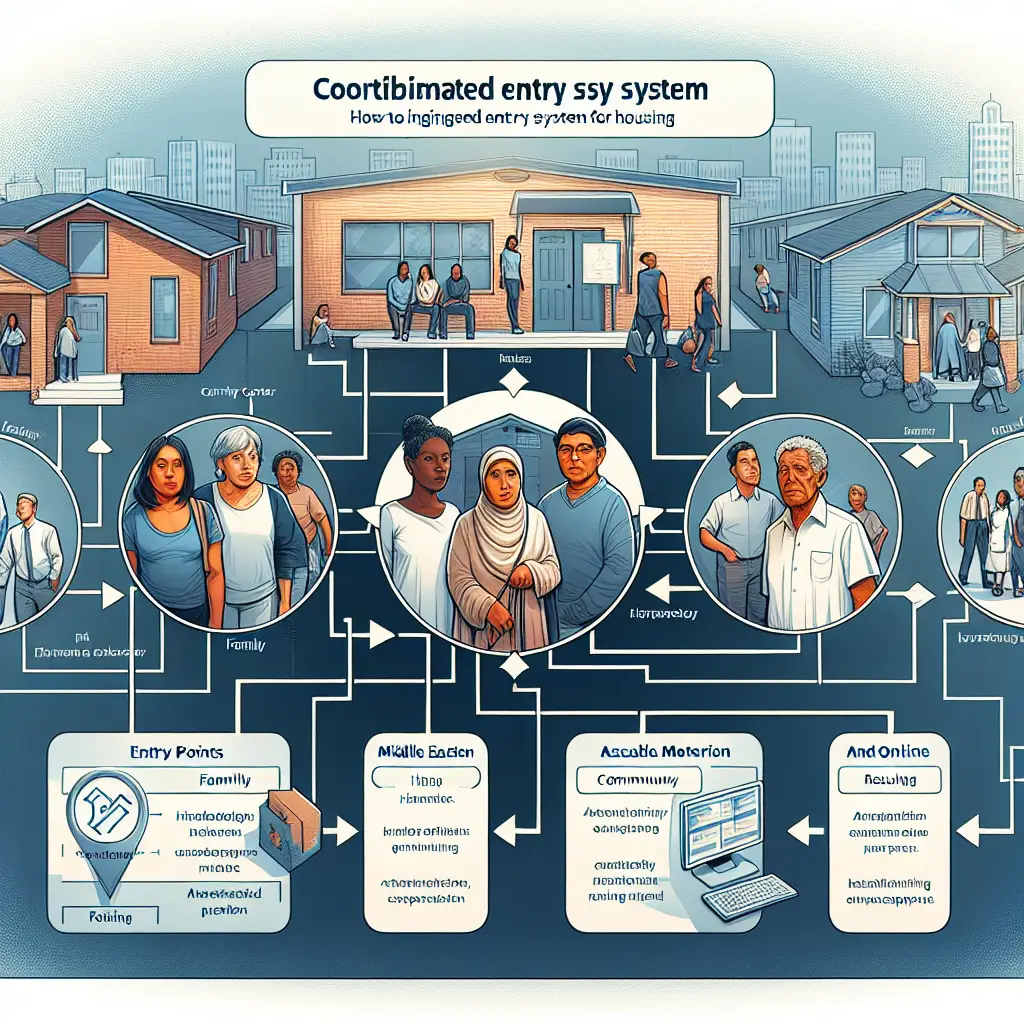Coordinated Entry System (CES)
Description
Understanding the Coordinated Entry System (CES) in Housing Services
Definition
A Coordinated Entry System (CES) is a systematic approach developed to guarantee fair and equal access to all individuals dealing with a housing crisis. It is designed to swiftly identify, assess, and link people to housing and aid based on their precise requirements.
Description
The Coordinated Entry System is a strategic solution designed to streamline the process for individuals and families experiencing homelessness or those at imminent risk. It centralizes and standardizes the process, helping service providers across regions to coordinate their efforts and work together effectively. CES operates under a principle of coordinating housing resources in a community-oriented manner that optimizes and tailors the aid to individual needs.
Objectives
- To provide coordinated and efficient access to suitable housing
- To evaluate and prioritize individuals based on their identified needs
- To promote fairness and transparency in accessing housing services
- To reduce homelessness by reliably connecting people to the help they need
Mechanisms
- It uses a standardized assessment tool for determining individuals' housing-related needs
- The system prioritizes people based on the severity of their needs and the available resources
- CES establishes consistent referral processes within the system for efficient service delivery
- It incorporates a ‘no wrong door’ policy, where people can access the system from various entry points
Benefits
- Efficient delivery and utilization of resources due to improved coordination
- Increased success in preventing homelessness due to early identification and intervention
- Enhanced transparency and consistency in housing services
- Improved data collection, allowing for better planning and decision-making
Challenges
- Resource limitations can affect the ability to meet housing needs in a timely manner
- Ensuring consistent implementation of CES practices across all service providers
- Data privacy and security concerns arising from the centralized system
- The complex nature of addressing individual needs, which can vary widely
Examples
- In Los Angeles, CES has assisted in reducing veteran homelessness by ensuring efficient connections between veterans and appropriate housing resources.
- Minneapolis and Hennepin County used CES to help end youth homelessness, creating a Youth Dedicated CES to prioritize and address the unique needs of young people experiencing housing instability.
Further Reading
- What is Coordinated Entry?, National Alliance to End Homelessness
- Coordinated Entry Core Elements, U.S. Department of Housing and Urban Development
Coordinated Entry System (CES) involves a lot of coordination and allocation of resources to ensure that everyone experiencing a housing crisis is able to access handled fairly and efficiently. It simultaneously underscores the importance of acting swiftly to prevent homelessness and prioritizes individuals based on their precise needs. Nevertheless, despite its benefits, implementing CES can be challenging due to resource limitations and the need for consistent practices across all service providers.



